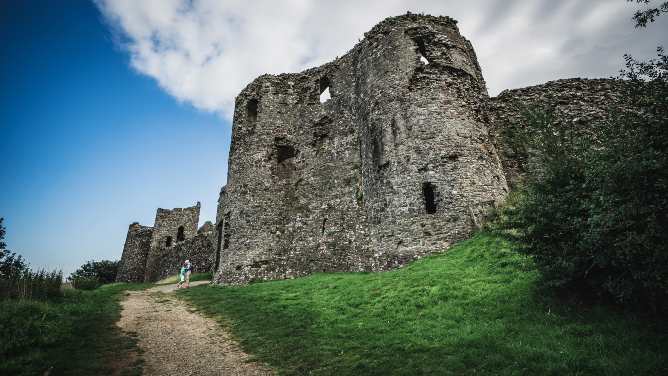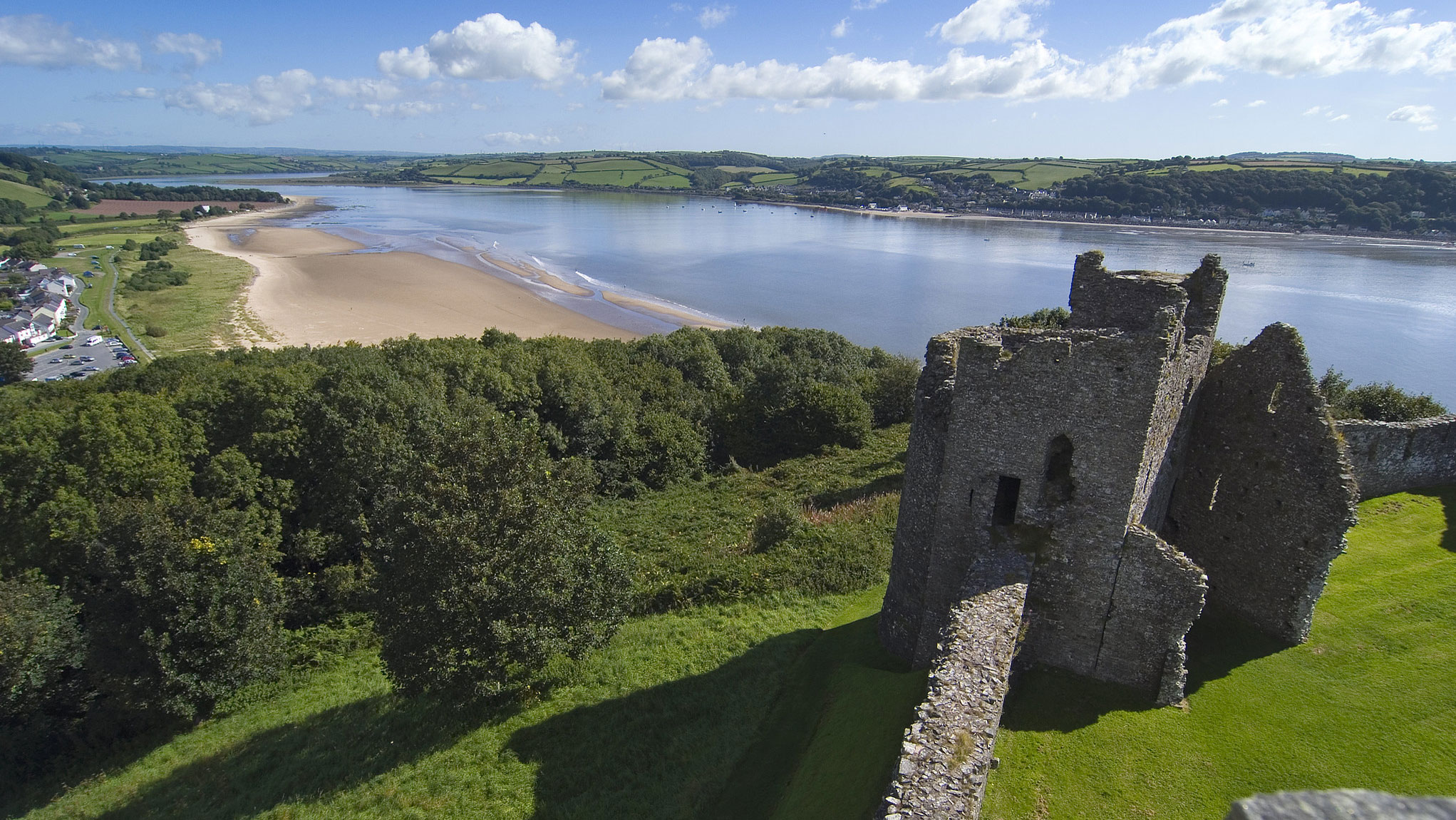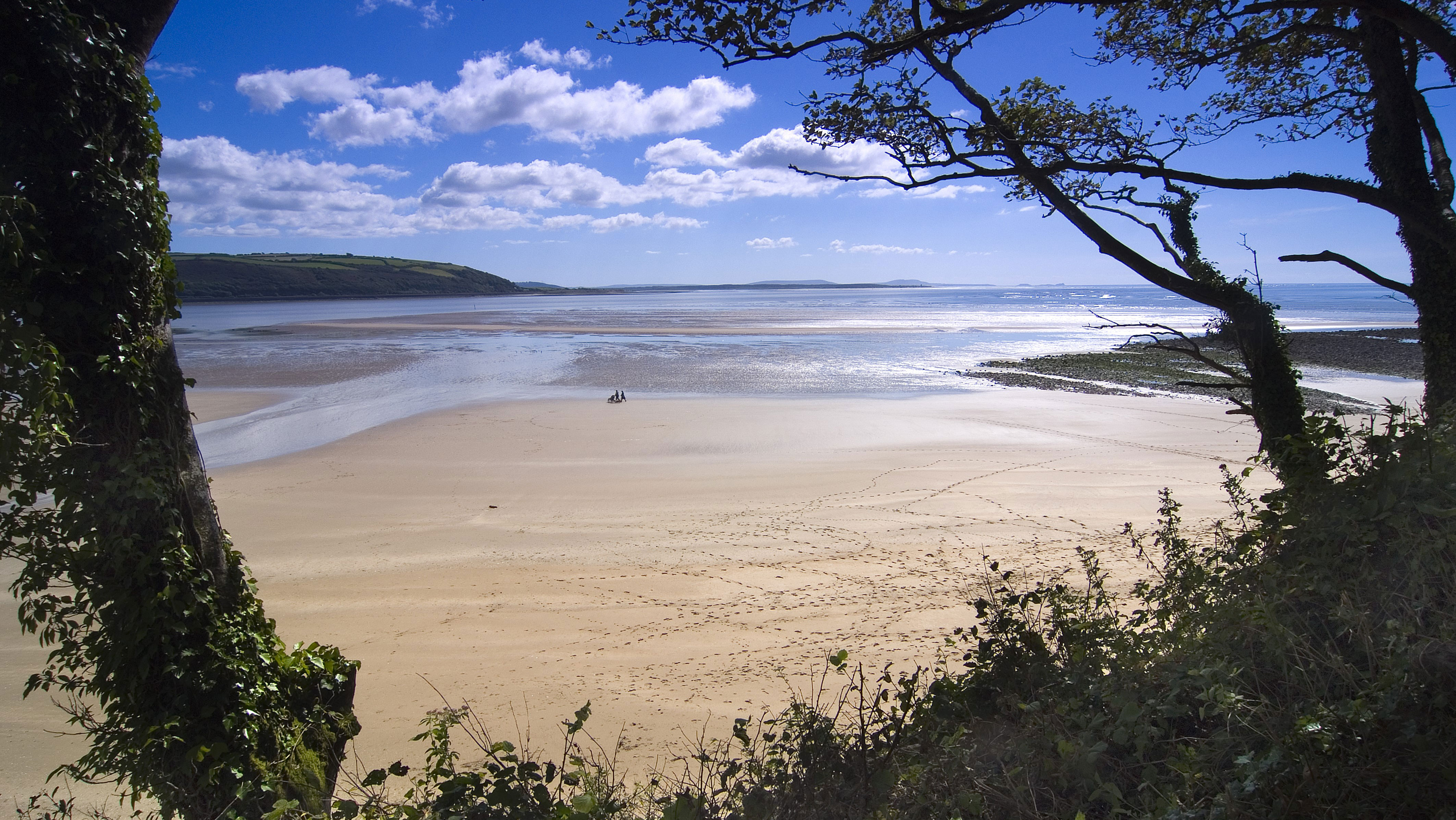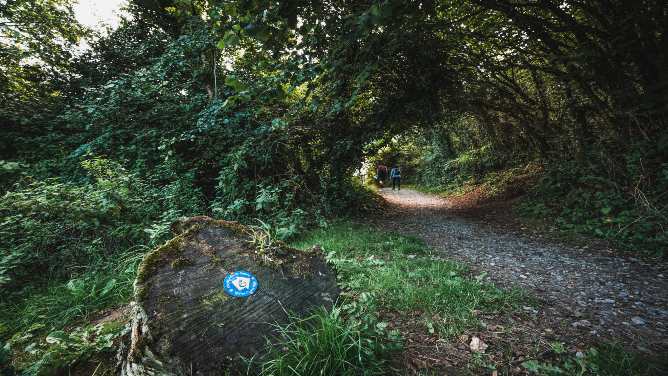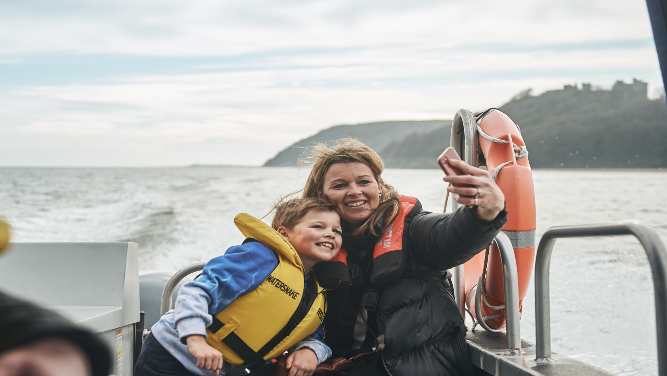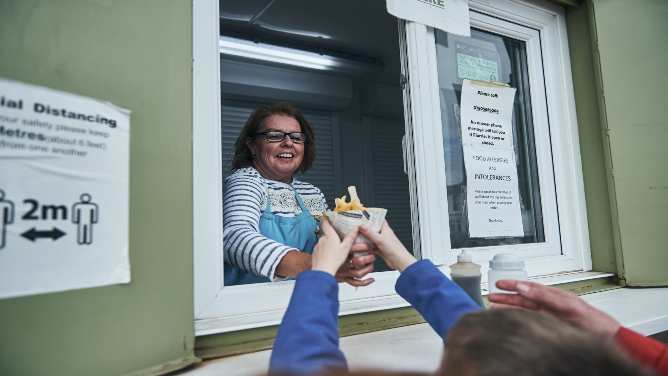Nestled between the shores of the Tywi Estuary and the rolling Carmarthenshire hills is the pretty village of Llansteffan. The main beach has golden sand that’s soft to sit on but firm enough to build quality sand castles.
If you head round to the more secluded cove of Scott’s Bay, you’ll pass rock pools teeming with sealife. A 12th-century Norman castle sits on the hill, which controlled an important ancient river crossing. The last ferry service between Llansteffan and Ferryside ceased in the 1940s, but in 2018, the new Glansteffan ferry resurrected the 1,000-year-old crossing.
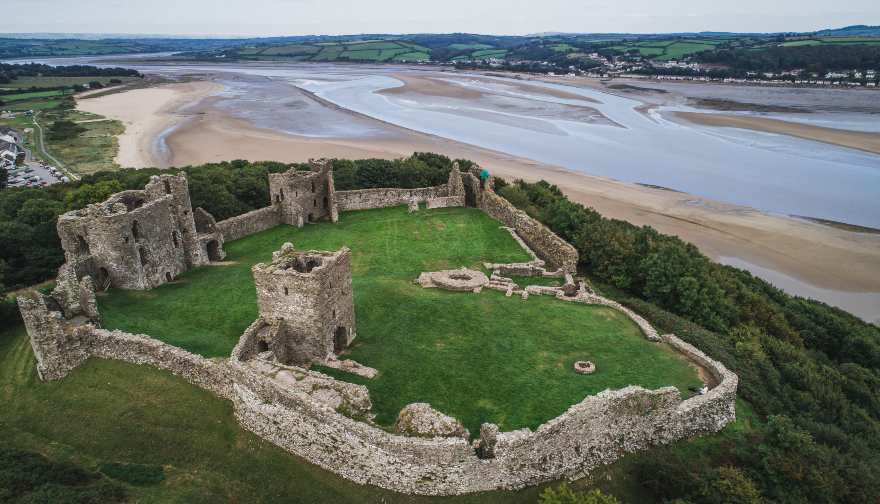
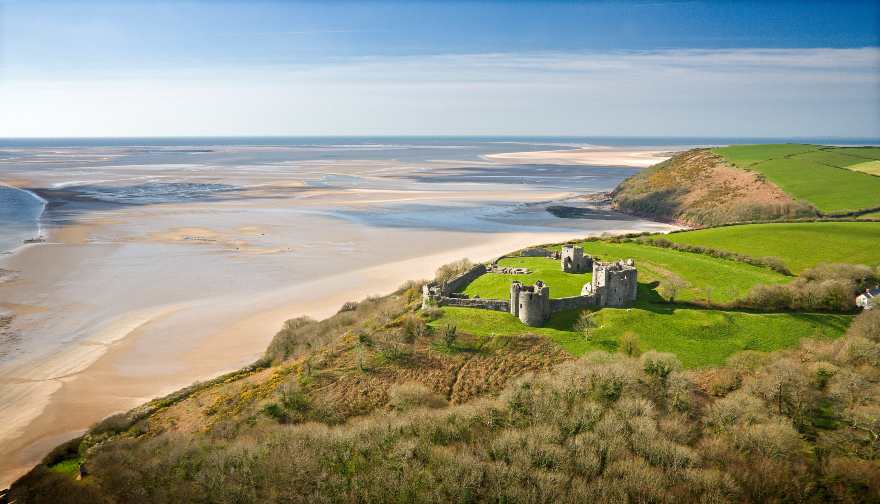
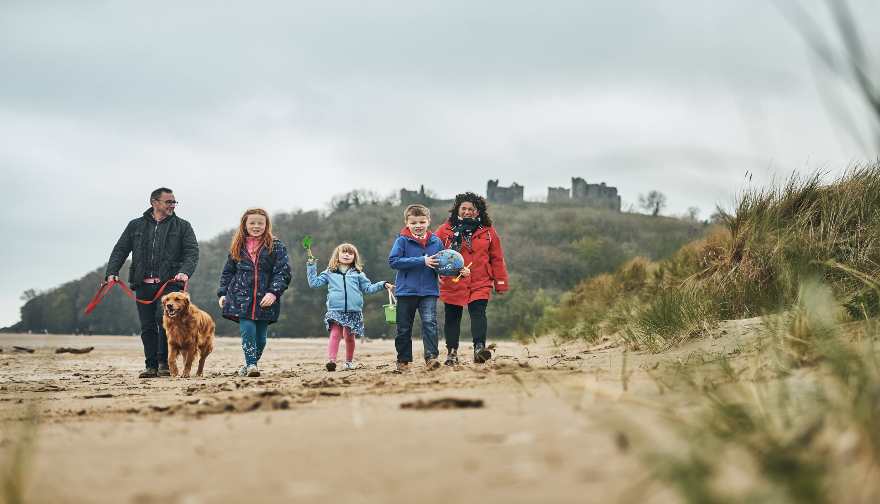
Crowning glory
Part of Llansteffan’s appeal is its 12th-century castle, which stands impressively on the top of a well-defined headland looking out over the sand-flats of the Tywi Estuary and Carmarthen Bay. The castle controlled the important Llansteffan to Ferryside crossing and actually occupied a site defended since prehistoric times.
Unsurprisingly, the Normans later spotted the defensive significance of the site and razed it soon after 1100. They built the rough stone walls which you can still see today. Over the next few centuries, the English lords and the Welsh rulers sparred for its ownership. The castle was captured by Welsh forces during Owain Glyndwr’s Rising, before being recaptured by the English and granted to the Crown. In the late 15th century, King Henry VII bestowed the castle to his uncle, Jasper Tudor, Earl of Pembroke.
Although only the castle ruins remain today, it still has the power to intimidate – especially when you approach its looming twin-towered gatehouse, built around 1280.
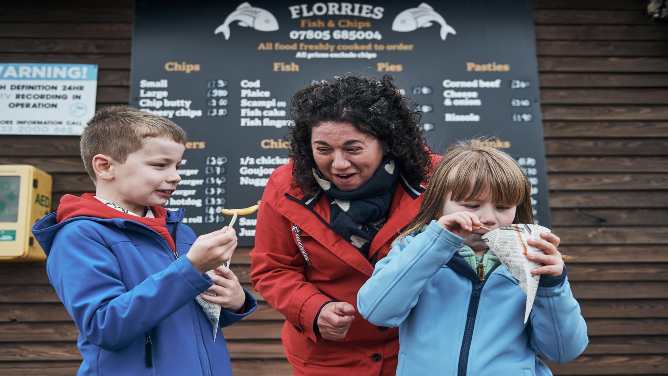
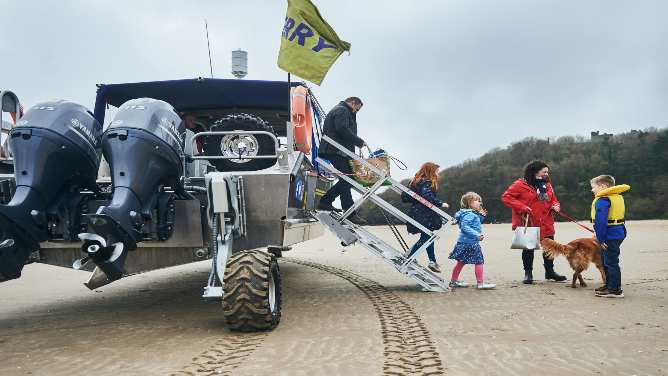

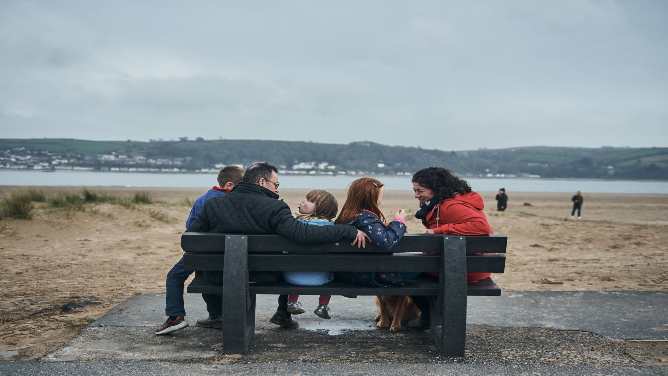
Vibrant village
Llansteffan has all the ingredients for the perfect seaside village. It has The Green, a well-kept common along the shoreline where ferry passengers alight. It has not one, but two pubs: The traditional Castle Inn – serving hearty pub grub and local ales – and, next door, The Inn at the Sticks, a gastropub with rooms . There’s a village church and, like many Welsh towns and villages, a traditional Baptist chapel. It also has a village store and post office, a tea room (which also doubles as a beach shop) and of course, a fish and chip shop. It’s even managed to retain its iconic red telephone boxes.
Llansteffan became a fashionable holiday destination in the mid-19th century, when well-heeled Victorian townsfolk started to arrive on the newly-opened Great Western Railway. In the early part of the 20th century, miners in the South Wales valleys would head west with their families for ‘Miners’ Fortnight’ – traditionally the last week of July and the first week of August. Nowadays, Llansteffan is the perfect place for those wanting a relaxing break off the beaten tourist track.
The Dylan Thomas Connection
Dylan Thomas’ mother, Florence, had family living in the rural communities around Llansteffan. His aunt’s farm, Fernhill, provided a base for many happy holidays he spent as a youngster stomping around the coastline. His poem Fern Hill reveals this precious freedom and innocence of his youth. The Edwinsford Arms, a pub that once quenched the thirsts of Llansteffan’s drinkers, features in his story A Visit to Grandpa’s. Later in life, Thomas would row across the Tâf Estuary to meet his father for a pint there.
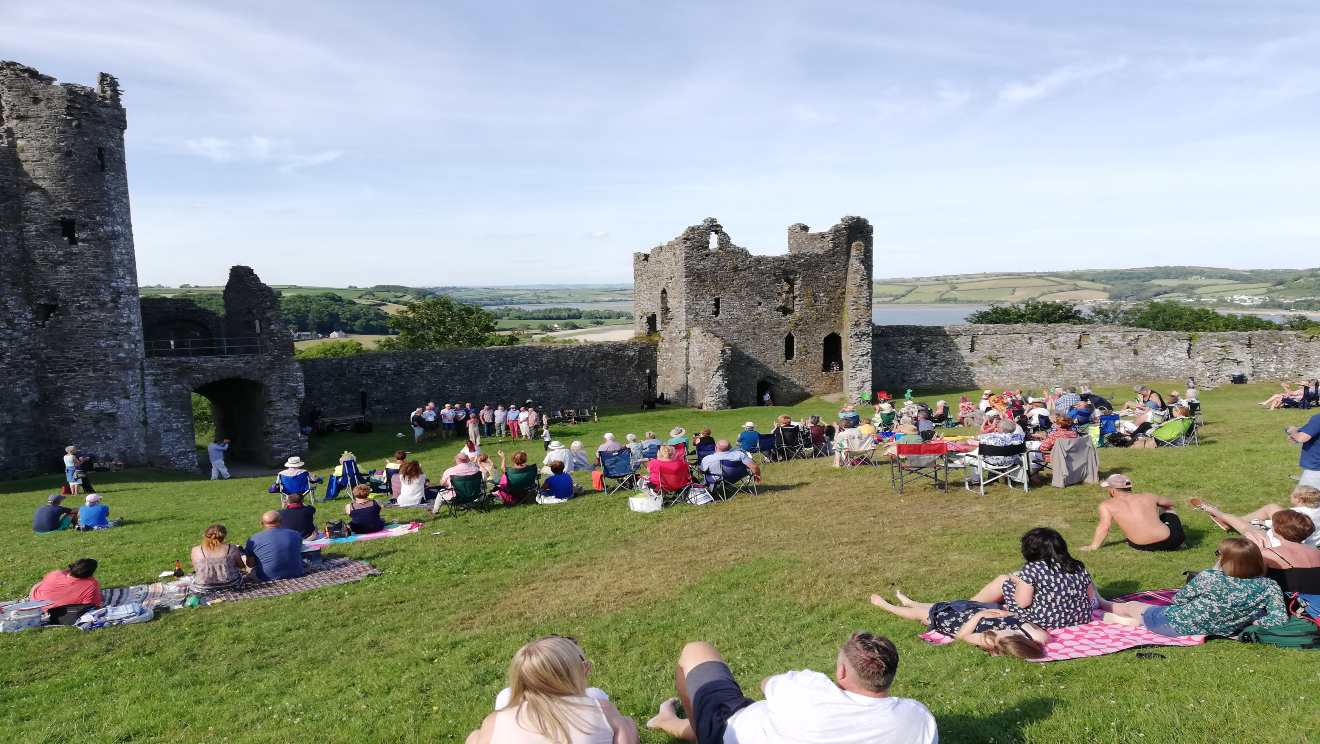
Mock mayor
A village tradition that has made a comeback in recent years is the election of Llansteffan’s Mock Mayor. It’s thought that the custom may have begun in the 19th century as a form of protest by the local agricultural workers against those in charge – the lords, dukes and politicians. A leader would be chosen, usually someone who had a reputation for being rather rambunctious, and they would then be dressed and paraded around the village on a cart or gambo for the amusement of all and sundry.
In recent times, the election of the mock mayor has been the first event in what has become known as Fiesta week, which generally takes place in the village at the beginning of August. Candidates put some serious effort into their campaigns, with some even going as far as producing social media videos in order to present their outrageous manifesto promises.
Insider tips
The must do: Take the walk up the hill to 12th-century Llansteffan Castle
The photo stop: A view of the coastline and castle taken from the Glansteffan ferry
The surprising story: Dylan Thomas’ family connections to the village
The refreshment stop: For a proper seaside experience, head straight off the beach for freshly-cooked fish and chips from Florries
The hidden gem: Walk half a mile around the headland to the quiet cove of Scott’s Bay. Perfect for a romantic picnic.
